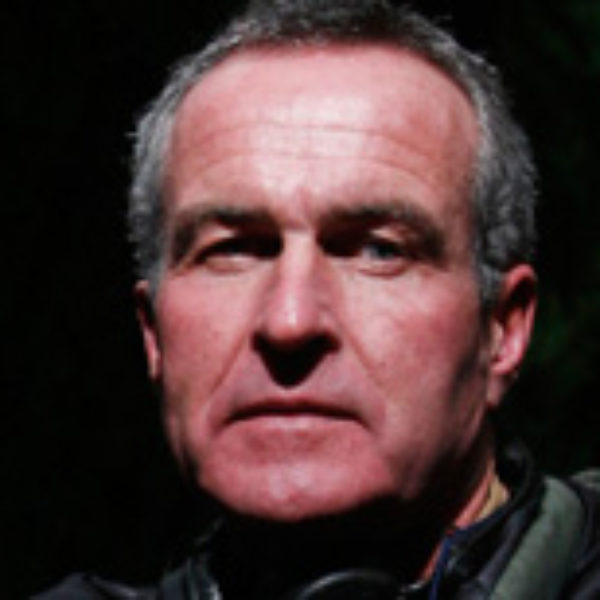Sounds of Silence
The day will come when man will have to fight noise as inexorably as cholera and the plague.” So said the Nobel Prize-winning bacteriologist Robert Koch in 1905. A century later, that day has drawn much nearer. Today silence has become an endangered species. Our cities, our suburbs, our farm communities, even our most expansive and remote national parks are not free from human noise intrusions. Nor is there relief even at the North Pole; continent-hopping jets see to that. Moreover, fighting noise is not the same as preserving silence. Our typical anti-noise strategies — earplugs, noise cancellation headphones, even noise abatement laws — offer no real solution because they do nothing to help us reconnect and listen to the land. And the land is speaking.
We’ve reached a time in human history when our global environmental crisis requires that we make permanent life-style changes. More than ever before, we need to fall back in love with the land. Silence is our meeting place.
It is our birthright to listen, quietly and undisturbed, to the natural environment and take whatever meanings we may. Long before the noises of mankind, there were only the sounds of the natural world. Our ears evolved perfectly tuned to hear these sounds-sounds that far exceed the range of human speech or even our most ambitious musical performances: a passing breeze that indicates a weather change, the first birdsongs of spring heralding a regreening of the land and a return to growth and prosperity, an approaching storm promising relief from a drought, and the shifting tide reminding us of the celestial ballet. All of these experiences connect us back to the land and to our evolutionary past.
One Square Inch of Silence is a place in the Hoh Rain Forest, part of Olympic National Park — arguably the quietest place in the United States. But it, too, is endangered, protected only by a policy that is neither practiced by the National Park Service itself nor supported by adequate laws. My hope is that One Square Inch will trigger a quiet awakening in all those willing to become true listeners.
Preserving natural silence is as necessary and essential as species preservation, habitat restoration, toxic waste cleanup, and carbon dioxide reduction, to name but a few of the immediate challenges that confront us in this still young century. The good news is that rescuing silence can come much more easily than tackling these other problems. A single law would signal a huge and immediate improvement. That law would prohibit all aircraft from flying over our most pristine national parks.
Silence is not the absence of something but the presence of everything. It lives here, profoundly, at One Square Inch in the Hoh Rain Forest. It is the presence of time, undisturbed. It can be felt within the chest. Silence nurtures our nature, our human nature, and lets us know who we are. Left with a more receptive mind and a more attuned ear, we become better listeners not only to nature but to each other. Silence can be carried like embers from a fire. Silence can be found, and silence can find you. Silence can be lost and also recovered. But silence cannot be imagined, although most people think so. To experience the soul-swelling wonder of silence, you must hear it.
Silence is a sound, many, many sounds. I’ve heard more than I can count. Silence is the moonlit song of the coyote signing the air, and the answer of its mate. It is the falling whisper of snow that will later melt with an astonishing reggae rhythm so crisp that you will want to dance to it. It is the sound of pollinating winged insects vibrating soft tunes as they defensively dart in and out of the pine boughs to temporarily escape the breeze, a mix of insect hum and pine sigh that will stick with you all day. Silence is the passing flock of chestnut-backed chickadees and red-breasted nuthatches, chirping and fluttering, reminding you of your own curiosity.
Have you heard the rain lately? America’s great northwest rain forest, no surprise, is an excellent place to listen. Here’s what I’ve heard at One Square Inch of Silence. The first of the rainy season is not wet at all. Initially, countless seeds fall from the towering trees. This is soon followed by the soft applause of fluttering maple leaves, which settle oh so quietly as a winter blanket for the seeds. But this quiet concert is merely a prelude.
When the first of many great rainstorms arrives, unleashing its mighty anthem, each species of tree makes its own sound in the wind and rain. Even the largest of the raindrops may never strike the ground. Nearly 300 feet overhead, high in the forest canopy, the leaves and bark absorb much of the moisture … until this aerial sponge becomes saturated and drops re-form and descend farther … striking lower branches and cascading onto sound-absorbing moss drapes … tapping on epiphytic ferns … faintly plopping on huckleberry bushes … and whacking the hard, firm salal leaves … before, finally, the drops inaudibly bend the delicate clover-like leaves of the wood sorrel and drip to leak into the ground. Heard day or night, this liquid ballet will continue for more than an hour after the actual rain ceases.
Recalling the warning of Robert Koch, developer of the scientific method that identifies the causes of disease, I believe the unchecked loss of silence is a canary in a coal mine-a global one. If we cannot make a stand here, if we turn a deaf ear to the issue of vanishing natural quiet, how can we expect to fare better with more complex environmental crises?
